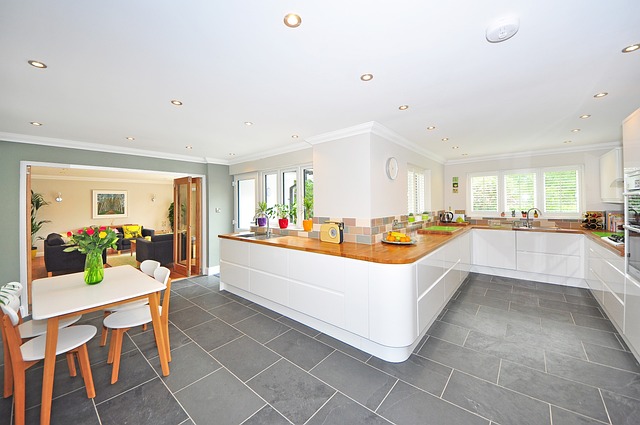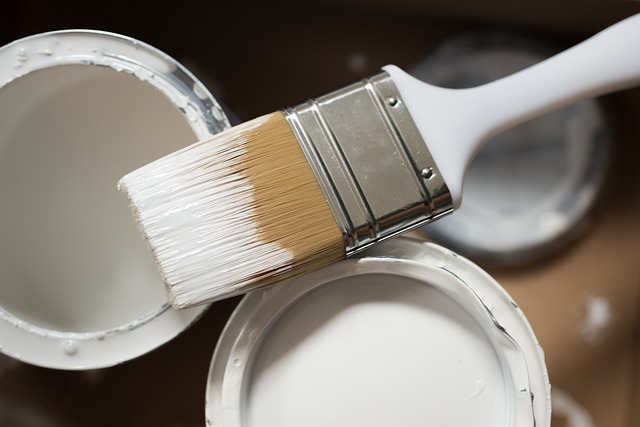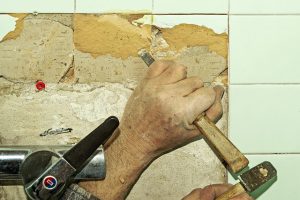Kitchen renovations often prioritize both aesthetic appeal and practicality, as seen with the strategic implementation of a backsplash. This architectural element is not just a visual focal point but also a hardy and low-maintenance surface, typically crafted from materials like glass, quartz, or porcelain, which are glossy, light-reflective, and resistant to stains and scratches. These materials ensure that the kitchen remains clean and bright with minimal effort. The backsplash's design is key to setting the kitchen's ambiance and can complement cabinetry and countertops while being a standout accent. For maintenance, opting for a horizontal layout or a vertical extension can cater to both practicality and modern style, with darker grout colors helping to keep it clean by blending in dirt. In summary, a well-designed backsplash is a pivotal element in kitchen renovations, enhancing the space's functionality and visual charm, and requiring minimal upkeep, making it a smart investment for any modern kitchen design.
Kitchen renovations often focus on combining aesthetics with functionality. A key element in this balance is the backsplash, which can elevate your kitchen’s style while offering a durable and easy-to-clean surface. This article delves into the art of backsplash installation, guiding you through selecting materials and designs that not only complement your kitchen’s ambiance but also stand up to daily use. Whether you’re aiming for sleek subway tiles or a bold mosaic, our insights ensure a stylish and enduring addition to your kitchen renovations.
- Maximizing Style and Functionality with Backsplash Installation for Stylish and Easy-to-Clean Surfaces in Kitchen Renovations
- Choosing the Right Materials and Designs for a Low-Maintenance, Chic Backsplash in Your Kitchen Renovation Project
Maximizing Style and Functionality with Backsplash Installation for Stylish and Easy-to-Clean Surfaces in Kitchen Renovations

Kitchen renovations often prioritize both aesthetic appeal and practical functionality. A backsplash installation serves as a critical element in achieving this dual goal, offering an opportunity to infuse style while ensuring easy maintenance. The choice of backsplash material can significantly impact the visual dynamics of the kitchen. Homeowners and designers alike are gravitating towards sleek, glossy tiles or slabs made from materials like glass, quartz, or porcelain. These surfaces not only reflect light, enhancing the space’s ambiance, but also provide a smooth, impervious finish that resists stains and is simple to wipe clean. The selection of a backsplash extends beyond mere decor; it sets the tone for the kitchen’s overall design ethos. By thoughtfully integrating color, texture, and pattern, a backsplash can become a focal point, complementing cabinetry and countertops while standing out as a distinctive feature. Additionally, the ease of cleaning these surfaces means that daily spills and splatters won’t leave lasting marks, ensuring that the kitchen remains fresh and appealing. This combination of style and functionality makes backsplash installation a pivotal decision in any kitchen renovation project.
Choosing the Right Materials and Designs for a Low-Maintenance, Chic Backsplash in Your Kitchen Renovation Project

When embarking on a kitchen renovation project, selecting the right materials and designs for your backsplash is pivotal for achieving both aesthetic appeal and ease of maintenance. Opting for durable and stain-resistant materials such as glass tiles, glazed ceramic, or porcelain ensures that your backsplash remains stylish without the constant upkeep. These materials not only offer a range of sleek and modern designs but also resist stains and scratches, making them ideal for busy kitchen environments. When considering design, think about how the backsplash complements your cabinetry and countertops while introducing a subtle pattern or color that enhances the overall ambiance. A timeless subway tile in a crisp white or soft gray, for instance, paired with glass accents, can add an element of sophistication and is easy to clean. Alternatively, larger format tiles can create a minimalist look that is both chic and modern. For those who prefer a touch of texture without compromising on cleanliness, consider textured glass or matte finishes which offer visual interest while being resistant to fingerprints and smudges.
In addition to material selection, the design layout can influence the backsplash’s maintenance requirements. A horizontal layout, for example, can be easier to clean compared to intricate patterns that collect dust and crumbs. A simple horizontal band around the cooking area can be a practical choice, while extending it vertically to a higher point adds a contemporary touch and protects walls from splashes. The grout choice is another critical factor; opting for darker grout on light tiles or vice versa can help disguise any dirt that accumulates over time, keeping your backsplash looking fresh and new with minimal effort. By carefully considering both the materials and designs, your kitchen renovation will not only reflect your personal style but also result in a low-maintenance, stylish backsplash that stands the test of time and use.
Kitchen renovations often hinge on the integration of functional and stylish elements. A backsplash serves as a practical and visually appealing choice that enhances both aesthetics and cleanliness. By carefully selecting materials and designs that suit your kitchen’s ambiance, homeowners can achieve a low-maintenance yet chic backdrop to their culinary endeavors. In conclusion, installing the right backsplash not only elevates the style of your kitchen but also simplifies its upkeep, making it a smart decision for those seeking a harmonious blend of form and function in their renovation projects.
